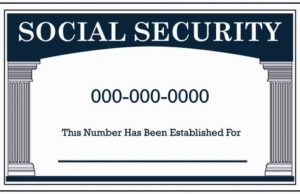
A Guide to Conditional Permanent Residence: Understanding the Requirements and Obligations
Conditional permanent residence refers to a temporary status granted to certain immigrants in the United States who are married to a U.S. citizen or permanent resident. This status requires individuals to fulfill specific requirements and obligations to maintain their permanent residency. This guide explains the essential elements of conditional permanent residence, including the requirements, obligations, and consequences of non-compliance.
Requirements for Conditional Permanent Residence
To qualify for conditional permanent residence, the applicant must be married to a U.S. citizen or a permanent resident. The application can be submitted simultaneously with the marriage petition to adjust status. The applicant must fulfill the following requirements:
– Prove that the marriage is bona fide and not a sham.
– Submit evidence to show that they were lawfully admitted to the United States.
– File the application for conditional permanent residence within 90 days of the two-year anniversary of their U.S. entry date.
– Pay the fee required for the application.
Obligations for Conditional Permanent Residence
Once an individual has been granted conditional permanent residence, they must fulfill specific obligations to maintain permanent residency status. These requirements include:
– Living with the sponsoring spouse or permanent resident.
– Filing for the removal of conditions jointly with the sponsoring spouse before the expiration of the conditional status. If the marriage has ended, the applicant may file the I-751 form for conditional residence waiver in some special circumstances, including issues like domestic abuse.
– Demonstrating that the marriage was bona fide by providing supporting documents like joint bank statements, tax returns, utility bills, etc.
– Keeping the USCIS informed of any change of address or employment within ten days.
Consequences of Non-Compliance
Non-compliance with the requirements and obligations of conditional permanent residency could lead to termination of permanent residency, deportation, or removal proceedings. Failing to file the I-751 form or doing so alone may result in the revocation of the permanent residency status, and the individual could be put into deportation proceedings. Additionally, submitting fraudulent documents or misinterpreting information could also lead to criminal prosecution.
Conclusion
Conditional permanent residence provides a pathway to permanent residency for immigrants married to a U.S. citizen or permanent resident. To maintain this status, applicants must fulfill specific requirements and obligations outlined by USCIS. Failing to comply with these regulations could result in the loss of permanent residency status. Therefore, it is imperative that anyone granted conditional permanent residency understands their requirements and responsibilities, complying with all obligations to ensure they maintain their legal status in the United States.
– Submit evidence to show that they were lawfully admitted to the United States.
– File the application for conditional permanent residence within 90 days of the two-year anniversary of their U.S. entry date.
– Pay the fee required for the application.
– Filing for the removal of conditions jointly with the sponsoring spouse before the expiration of the conditional status. If the marriage has ended, the applicant may file the I-751 form for conditional residence waiver in some special circumstances, including issues like domestic abuse.
– Demonstrating that the marriage was bona fide by providing supporting documents like joint bank statements, tax returns, utility bills, etc.
– Keeping the USCIS informed of any change of address or employment within ten days.
Guide to Conditional Permanent Residence: What You Need to Know
If you are an immigrant and have recently acquired your permanent residence in the United States, it is important to know about conditional permanent residence. Conditional permanent residence is a type of residency status that is granted to some immigrants who have gained their permanent residency primarily through marriage, as well as certain investors. This guide aims to cover all the essentials about conditional permanent residence in the United States.
What is Conditional Permanent Residence?
A conditional permanent residence is a temporary status that is granted to some immigrants who gain their permanent residency primarily through marriage, as well as certain investors. It is called conditional because it is granted for a two-year period during which time the immigrant must prove that their marriage is bona fide or their investment has been made.
Conditional permanent residence status exists primarily to prevent immigration fraud. By only offering a conditional residency to those who qualify for it through a marital or investment relationship, the U.S. government can ensure that the relationships entered into were genuine.
Who is Eligible for Conditional Permanent Residence?
To be eligible for conditional permanent residence, you must fit into one of two categories:
1. You Are a Spouse of a U.S. Citizen or Permanent Resident Gambler
If you gained your permanent residency because you are married to a U.S. citizen or permanent resident, your residency is only conditional if:
– The marriage was less than two years old when the immigrant spouse was given permanent residency
– There is insufficient evidence to suggest the marriage was bona fide at the time of the immigrant’s green card interview
2. You Are an Investor in the United States
If you gained your permanent residency through an investment in the United States, your residency is only conditional for the first two years. You can only be granted permanent residency after your investment has created ten full-time jobs for U.S. workers.
How Long Does Your Conditional Permanent Residence Last?
Conditional permanent residency lasts for two years, at which point you need to apply for the removal of the conditions. You must file a joint petition with your spouse to remove the conditions and show evidence that the marriage remains bona fide.
If you’re no longer married to your spouse, you could still file an application to remove conditional status on your own. You will have to prove that your marriage was bona fide and went through a good faith divorce.
You should remember that conditional permanent residency and regular permanent residency are the same in terms of their benefits. If you meet all the requirements to remove the conditions from your residency, you’ll become a regular permanent resident without the conditional status.
How to Apply to Remove the Condition of Your Residence
You must file Form I-751, Petition to Remove Conditions on Residence, to remove the conditions on your residency. When filing the Form I-751, you must provide evidence demonstrating that your marriage was bona fide at the time you received conditional permanent residency.
Evidence to prove a bona fide marriage may include:
– Joint tax returns
– A lease that shows both you and your spouse live together
– Joint bank account statements
– Proof of joint ownership of property and assets
– Birth certificates of any children together
If you have compelling reasons why you can’t file jointly with your spouse, you can apply with a waiver request on your own. However, you need to prove that you would experience extreme hardship if you left the United States.
Proving extreme hardship is a challenging process. You should consider engaging the services of an immigration attorney to help you with your case.
What Happens if You Don’t Apply to Remove the Condition of Your Residence?
If you fail to file the Form I-751 by the expiration date of your conditional residency, you’ll lose your residency and become deportable. You must leave the country immediately or risk facing more severe consequences, such as detention or jail time.
What’s more, if you do not apply to remove the condition of your residency, USCIS may initiate removal (deportation) proceedings against you.
How Long Does the Process Take?
The entire process of applying to remove the condition of your residence can take anywhere from six months to a year or more, depending on the specific circumstances surrounding your case.
The waiting time can vary due to the volume of applications USCIS is processing. In some instances, you may have to attend an interview with a USCIS officer.
What Happens if You Divorce Before the Two-Year Period is Over?
If you’re no longer married to your spouse, but your residency has not yet reached its two-year anniversary, you must notify USCIS of your change in marital status. Doing so can lead to removal proceedings, which is why you must apply to remove the condition jointly or with a waiver request.
What Happens if You Divorce After Two Years?
If you divorce after your two-year period, you’ll have already satisfied your condition of residency. Your permanent residency will not be affected, assuming you have already submitted the petition to remove your residency’s condition.
What Happens if Your Application is Rejected?
If your application to remove the condition of your residency is rejected, you’ll receive a notice from USCIS indicating why your petition was denied. You could file an appeal or file a new petition that addresses the reason for the denial.
Conclusion
Conditional permanent residency exists to prevent marriage fraud and protect the integrity of the U.S. immigration system. However, it requires you to take the necessary steps to remove the condition applied to your residency status as soon as possible following your two-year anniversary.
If you follow the steps outlined in this guide, you’ll be on the right track to remove the condition and become an unrestricted permanent resident in good standing. However, due to the highly sensitive and intricate nature of immigration affairs, it’s wise to enlist the services of an experienced immigration attorney to guide you through the process.
By familiarizing yourself with this guide and obtaining reliable legal representation, you’ll be well-equipped to navigate the intricacies of your conditional permanent residency and enjoy all the benefits that come with permanent residency in the United States.
As stated, something that makes the immigration process infinitely harder to comprehend is the variability of terms even when their language would seem to suggest there is little proverbial wiggle room. The phrase “permanent residency”, to reemphasize, is misleading because there are standards so that one’s indefinite term of residency in the United States may become voluntarily or involuntarily voided.
On a related note, many people might think that a green card to the U.S. through a spousal relation will be their ticket to becoming a permanent resident; marriage is a popular route by which direct family members can be brought to the United States and can become citizens in a shorter amount of time than one would normally experience in ultimately making a bid for citizenship.
What the applicant trying to gain the status of a permanent resident through marriage must understand, however, is that there is another hurdle, conditional permanent residence, that must be crossed in the path to becoming a lawful permanent resident.
Marriage isn’t even the only institution that has to suffer on conditions placed on one’s immigrant status; the immigrant investor also must elect to removes conditions on his or her status if they filled out the application in a certain way. Below are summaries for the responsibilities that face the permanent resident through marriage and the entrepreneurial visa.
The permanent resident through marriage must petition jointly with their spouse on their own behalf using the I-751 form, Petition to Remove Conditions on Permanent Residence. Of course, the requisite fees for filing the motion and processing one’s biometrics information must be paid and received by the Bureau of Citizenship and Immigration Services, a subset of the Department of Homeland Security.
In the interview with a consular official for the acquisition of status of a lawful permanent resident, marriage between an individual and their respective spouse must be evidenced, and this is usually accomplished by copies of forms that one filled out in tandem.
One who becomes a permanent resident through marriage must file this petition within ninety days of the two-year anniversary of attaining conditional residence, and is encouraged to file early to make sure he or she does not reach immigration officials late. As for the entrepreneur/immigrant investor, he or she may have to first file a petition for an EB-5 visa (for the spouse/fiancé(e) and future permanent resident, marriage visas such the K-1, K-3 or CR1 will be needed prior to the acquisition of a green card).
There are specific qualifications for the investor visa, such as the need to create or expand an existing business, the need to invest over a million dollars, and/or the need to create ten or more jobs. Upon eligibility, the proper form must be filed, and in these terms, there are comparisons and contrasts to be made between this route and becoming a permanent resident through marriage.
With conditional residency via marriage and entrepreneurship, that same two-year period less 90 days through which to wait is needed. However, whereas to apply to become a permanent resident, marriage visa holders must sign the I-751, foreign businesspeople must sign the I-829 Petition by Entrepreneur to Remove Conditions, obviously a different form from the I-751.

























